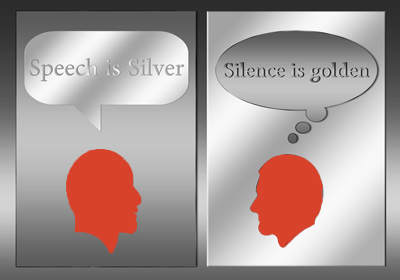Our executive coaching work often involves helping leaders to improve their leadership communication skills.
Some senior executives are hesitant or even reluctant to speak up when they are in business meetings unless they are running the meeting or the topic is in their area of expertise. The common reasons can range from “I agree, so why say anything” to “I’m not one of those people who just like to hear themselves talk” or even “the others at the meeting must already know what I think, so why add my contribution when we just need to get on with it.”
Our response to these clients is, “As a leader, how you present yourself is very important. You have a place and a voice at the table. While there are indeed times when silence works, there are times when it doesn’t and can project disinterest.”
Here are some tips and techniques we share with our clients when they find themselves in a group setting and don’t express their view.
Silence doesn’t equal agreement
Some of the leaders we’ve worked with consider silence in group settings to be a form of agreement. “If I agree, why would I need to say anything?” It’s a good question and can sometimes be the right approach. But like it or not, when a person rises to higher levels in an organisation, they are in a fishbowl and others look to them for their view. If the leader doesn’t offer input, others may interpret this as disinterest, dismissive, ignoring or even disagreement.
We’re not suggesting, however, that executives should fill the air with superficial responses to express agreement. Although an occasional “uh huh” is ok, it’s better to selectively and simply reinforce a comment with something like, “that’s a very good point” or “yes, that’s clear.” Body language is also an indicator – leaning in toward the speaker, or slouching back in the chair broadcasts how someone is “tuned-in” or “tuned-out.” If you want more explanation, you can say, “I think I understand what you’re saying, tell me more.” Another technique is to state your understanding of what was said. For example, “Let me see if I got what you mean” and then state what you interpret as the speaker’s meaning. In all cases, staying tuned into the discussion is vital.
Ask open-ended questions
Questions that begin with what, where, why and how will almost always lead to better understanding and provide opportunities for follow up to further clarify meaning.
Another way to think about it is that good questions – the right question at the right time about the right thing – can move the topic into sharper focus and a more thoughtful and often strategic level of dialog. The right question can:
- Ensure your interpretation is the same as what the speaker intends
- Get the speaker to provide more clarifying information
- Help the speaker see other points of view
Disagree effectively
When a leader disagrees with the speaker and wants to express a point of view, an effective technique is to first be clear about what was heard, and then ask questions. Unless you’re trying to get the other person to defend their point, you want to ask for clarification before you express your view. Remember, it is about the topic and not about the person.
By clarifying and asking open-ended questions, the conversation progresses, the leader disagrees without being disagreeable and gets affirmation from others.
Thanks to Mike Martorella for this post’s inspiration.
[callout title=”Do you use silence to disagree?” button=”Here’s how” link=”/services/leadership-development/” buttoncolor=”white, yellow, orange, red, blue, green, gray, black, alternative-1, alternative-2, alternative-3″ target=”_blank or _self”]Become a more effective leader[/callout]
